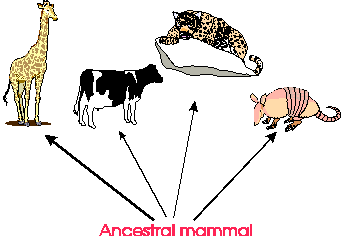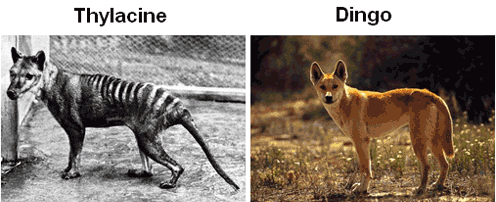Styles of Evolution
 |
Divergent Evolution |
The process by which an ancestral species gives rise to diverse descendants adapted to various aspects of the environment is known as divergent evolution. This style of evolution is best epitomized by the diversification of mammals since the end of the mesozoic from a common shrew-like ancestor to all modern mammals such as bats, primates, whales, and rhinoceroses. The process of divergent evolution leads to descendants that differ markedly from their ancestors as a result of adapting to different environments.
Convergent evolution and parallel evolution, on the other hand, are processes whereby organisms develop similar traits due the similarities of the environments in which they live. Convergent evolution refers to the development of similar traits in very distantly related animals. Take for example the similarity of form between fish and marine mammal such as whales and dolphins. As the ancestors of these animals returned to water environments they began to
 |
Example of convergent evolution |
evolve features that were better suited for aquatic lifestyles. Another example of convergent evolution can be seen in the thylacine (marcupial) and the dingo (mammal ). Since both of these animals occupy similar niches and evolved in the same environment both developed similar features even though they are very distantly related. Parallel evolution occurs when similar characteristics arise in closely related organisms again due to the similarity of environments in which the organism live. For example the gerboa and the kangaroo rat both are rodents and since both have adapted to a desert environment both are similar in form.
